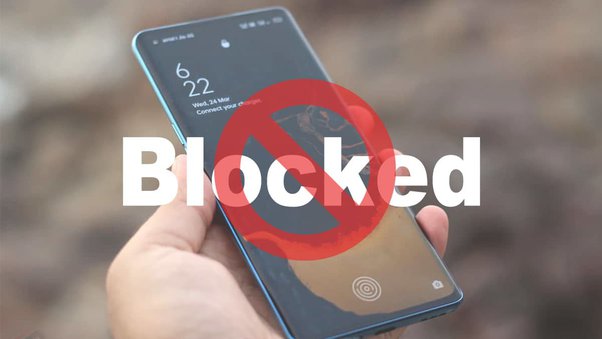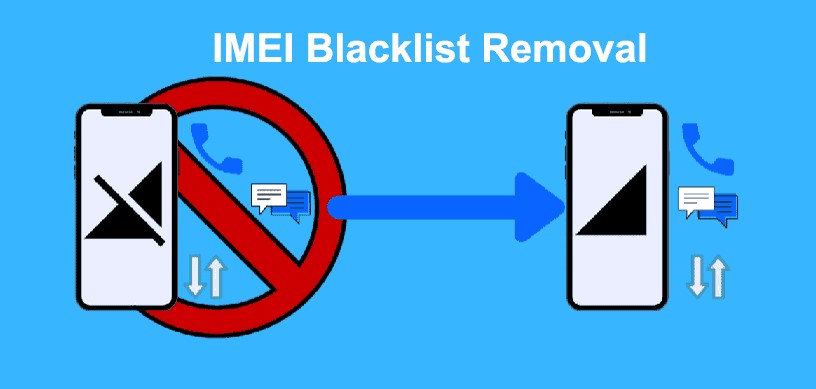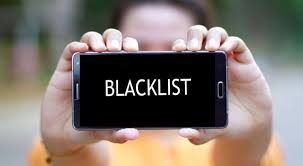If your smartphone has been stolen, the first action that you need to take is to block or blacklist the device’s IMEI number. Now, the question is, “What happens when you block the IMEI number?”
Technically, blocking the number after your device has been stolen is the right way of progressing. It ensures that your device is blocked and no one would be able to access the data that’s in the smartphone, securing your details from getting stolen or worse, misused.
This article will walk you through all the important details that you need to know about blocking your IMEI number or blacklisting it.
Why is it Mandatory to Block the IMEI Number?
IMEI, otherwise known as the International Mobile Equipment Number is a unique serial identification number that’s allocated for every smartphone.
The question that irks people’s minds is, “Why is it necessary to block the IMEI Number when the phone gets stolen?” The main reason why you must block the IMEI number is to protect your device and its data.

What happens when you block the IMEI number is that it doesn’t block the device entirely but it will block the device from getting access to the network connectivity, thereby shielding your data that’s in the device.
When your device gets stolen, there are possibilities that the thief might sell the smartphone to a criminal, leading to potential risks of you getting involved in different sorts of crime without even being part of it. Blocking the IMEI number means that these thieves won’t be able to connect the device to the mobile network, keeping it safe.
In short, blocking your IMEI number after it has been stolen is an effective way to prevent risks of legal troubles, which are very common when smartphones are stolen.
What Happens When the IMEI Number is Blocked?
Now that you have an idea why it is crucial to block or blacklist an IMEI number, the next thing you need to focus on is the mechanism behind the whole process.
In short, what happens when the device’s IMEI number is blocked?
In most cases, the blocking and blacklisting process happens via the mobile carrier you are using. This means that the block request is submitted to the respective mobile carrier, which then assesses and analyzes the request and processes the blacklisting process.
Once the mobile carriers are intimated about the blacklist, their work is to prevent any third-party users in the future from accessing the blacklisted device by blocking access to the mobile network. That’s how streamlined and convenient the whole process is.
The moment someone blacklists their IMEI number, the list is updated with the mobile carriers so even if someone tries to access the device in the future, it doesn’t connect to the mobile network, thereby streamlining the whole process.

However, there are certain limitations to the process. For example, let’s say you are a U.S. citizen and your device has been stolen in the U.S. When you blacklist your IMEI number in the U.S., the effect of the blacklist is only limited in the United States.
The moment the thieves take the device out of the United States to, for example, Europe, the blacklist won’t be functional there anymore. This is hands down one of the biggest loopholes in the whole process.
One of the main reasons why that is the case is due to a lack of a global directory. What this means is that there is no globalized update of the blacklist information across the world, which leads to complexities in the long run.
The process of blocking the IMEI number is pretty simple. The most formal way would be via the police, where you report the complaint about your device being stolen. There, the police will most likely ask you about the IMEI or serial number of the device and help you blacklist that number.
Is there any way to Bypass or Unlock a Blacklisted IMEI Number?
We often have an affinity towards buying second-hand smartphones from random seller’s online thinking that it will help us save some extra coins. While it’s true that purchasing a second-hand smartphone has its list of benefits, it comes with its fair share of complexities too.
If your refurbished or second-hand smartphone is one with a blocked IMEI number, chances are you won’t be able to use the device unless you unlock the blacklist. If that’s the case, the most prominent issue would be that you won’t be able to connect to the internet, make phone calls, send messages, etc.

Following are a few methods that you can try to unlock the blacklisted number:
- Using third-party services
There are different service providers (online and offline) that you can use to unlock your IMEI number. This is the most common resolution that the majority of people opt for, knowing that it’s effective and gets the job done as expected. There are certain applications available on the App Store and Play Store that can help you bypass the issue.
However, the only thing you need access to is the Equipment Serial Number (ESN) to be able to unlock the block or blacklist.
- Contacting the mobile carrier
As we mentioned in the previous section of the article, the blacklist processing is done via the mobile carrier that you are using. So, if you want to unlock the blacklist, contacting the carrier is your safest bet.
There might be a few processing and verification needed to ensure that the mobile is in the right hands before the carrier unlocks the blacklist.
- Switching the mobile carrier
Since the blacklisting of the IMEI number happens with the mobile carrier in the device, switching to a new mobile carrier should unlock the issue in no time at all. To be fair, there are a lot of complications involved in the process, so that’s one thing you have to keep in mind.
You’d need verification and permission from the current carrier to be able to switch to a new one if the device’s IMEI is blocked.
Overall, there are a lot of factors that one needs to keep in consideration before blocking the IMEI number. However, since it’s done when the device is stolen, in most cases, it is to protect one’s sensitive data from being misused or landing oneself in legal trouble.
What are the Next Steps when Mobile Phone is Stolen?
So, you were out traveling and somehow, you realize that your smartphone has been stolen. What do you do next? This is a very common question that people have.
Here’s a quick step-by-step breakdown:
Sometimes, there are possibilities that the smartphone isn’t stolen but you have misplaced it. Before complaining, call the number on your smartphone. If it’s not stolen and someone has kept it safe with them, you can retrieve it before following the next steps.
- The first step is to complain to your local police station.
- Next, you need to block the IMEI number of your phone to ensure that it isn’t getting misused and used in illegal activities.
- If you use an iPhone, there is a “Lost Mode” function in the device settings. You can use that to track your device. If nothing seems to work out, you can use this feature to erase all the data in your iPhone as well.
- If you use an Android device, the “Find my device” can be your savior. There are two routes from there. You can use the “Secure my device” if you think that you have genuinely lost the smartphone. However, if you are sure that your smartphone has been stolen, the next thing you can do is use the “Erase device” option.
Activating these features on your iPhone or Android devices will prevent the device from getting reset by thieves.
Why is the IMEI Number of my Smartphone Blacklisted?
Most commonly, the reason why your IMEI number is blocked or blacklisted is because you have bought a second-hand device. Kindly keep into consideration that not every second-hand phone will have its IMEI blacklisted.
However, if you notice that yours is, it is most likely a stolen device. If you use your mobile carrier, it will get blocked, leading to a myriad of complications. What we’d recommend you do is return the device or contact your local police station to sort things out.
This is one of the main reasons why you must always cross-check the mobile network and its functionalities before you end up buying a second-hand smartphone. The last thing you want is to end up losing or wasting all your money.
Conclusion
Blacklisting or blocking your IMEI number is a necessity if you find that your mobile device has been stolen. It secures the data and ensures that you don’t get yourself in the middle of legal trouble. Also, blocked IMEI number devices are a common issue when you are buying a second-hand phone, so that’s another thing we’d recommend you pay close attention to.
